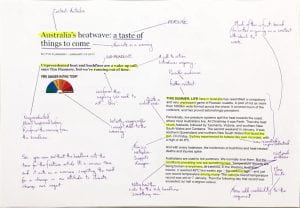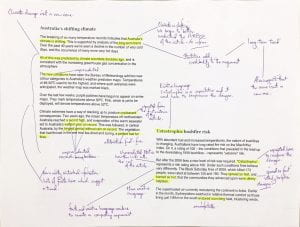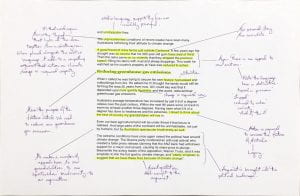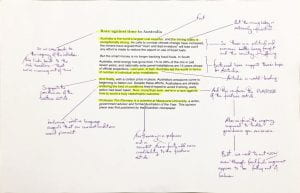Please use the framework below to guide your preparation for this assessment. The task sheet is available to download in a previous blog post.
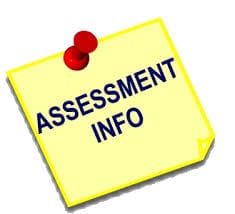
You will need to make notes on EACH of the videos which are linked on the task sheet.
Your notes will need to be on:
- Context, Audience and Purpose.
- Summary of the content of each text- What is each text about?
- How the text uses written and visual conventions to persuade the viewer to agree with the views promoted by each text.
- SWAT analysis and how language is used to encourage a specific response.
Then, on Thursday, we will write a written response to 2-3 texts of your choice using the following structure:
1. Introduction- Describe the issue generally. Mention the program’s title, it’s director and/or the journalist’s contention.
e.g. The ‘A Current Affair’ program on Channel 9, is hosted by Tracey Grimshaw. Ben Fordham reported on the considerable controversy over the use of 1080 fox bait to control Victoria’s fox population. In this episode the journalist stated that ‘They’re pests but cruelty is inexcusable.’ The reporter/journalist puts forward a logical and, at times, emotive argument about how cruel and inhumane the use of this bait is.
2. Two body paragraphs-Identify a persuasive technique, Give examples of how it is used in the television episode and then explain how it makes the reader feel and builds support for the reporter’s argument.
e.g. The report from the long-time current events program, ‘A Current Affair’, presents a look at the pros and cons of the rental market in Australia. The different programs present both perspectives of the rental market; attacking the inappropriate behaviour of ruthless landlords as well as looking at the ugly result of bad tenants. The television program, from Channel 9, is a well-known, long running Australian current events program and is often the focus of criticism from viewers because of its invasive pursuit for a story.
e.g. Connotations or suggestions are immediate with the title of the story ‘Home wrecker’ an immediate establishment of negativity of the report. The angry tone continues throughout the program. Negative connotations from the presenter are also immediate as she continues with ‘senseless act of betrayal’ and ‘trashed a perfectly good home’. But when ‘The devastated owners confront the tenants from hell’ the story continues a visual downward spiral.
3. Conclusion- Summarise the main techniques that the reporter has used to persuade the viewer.

